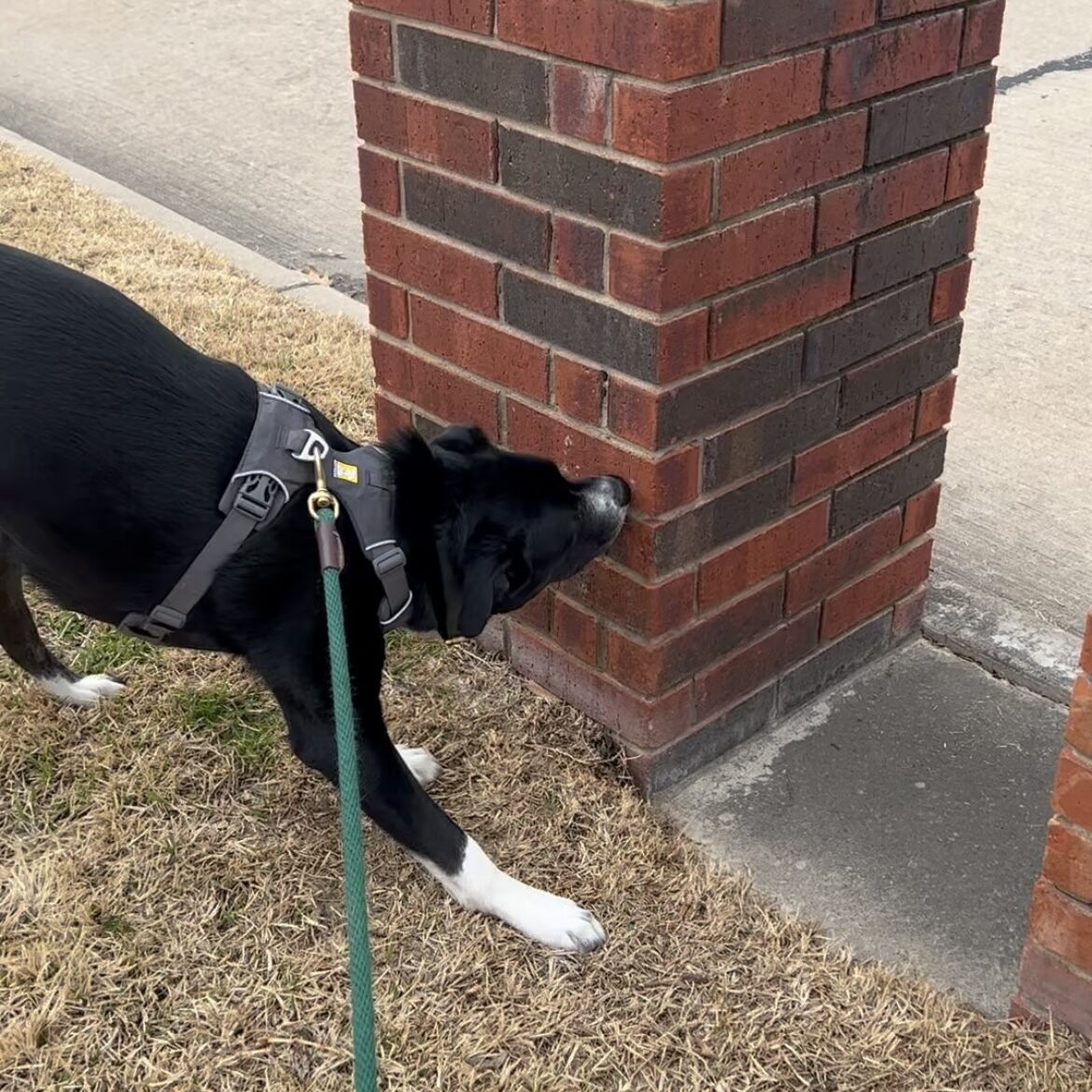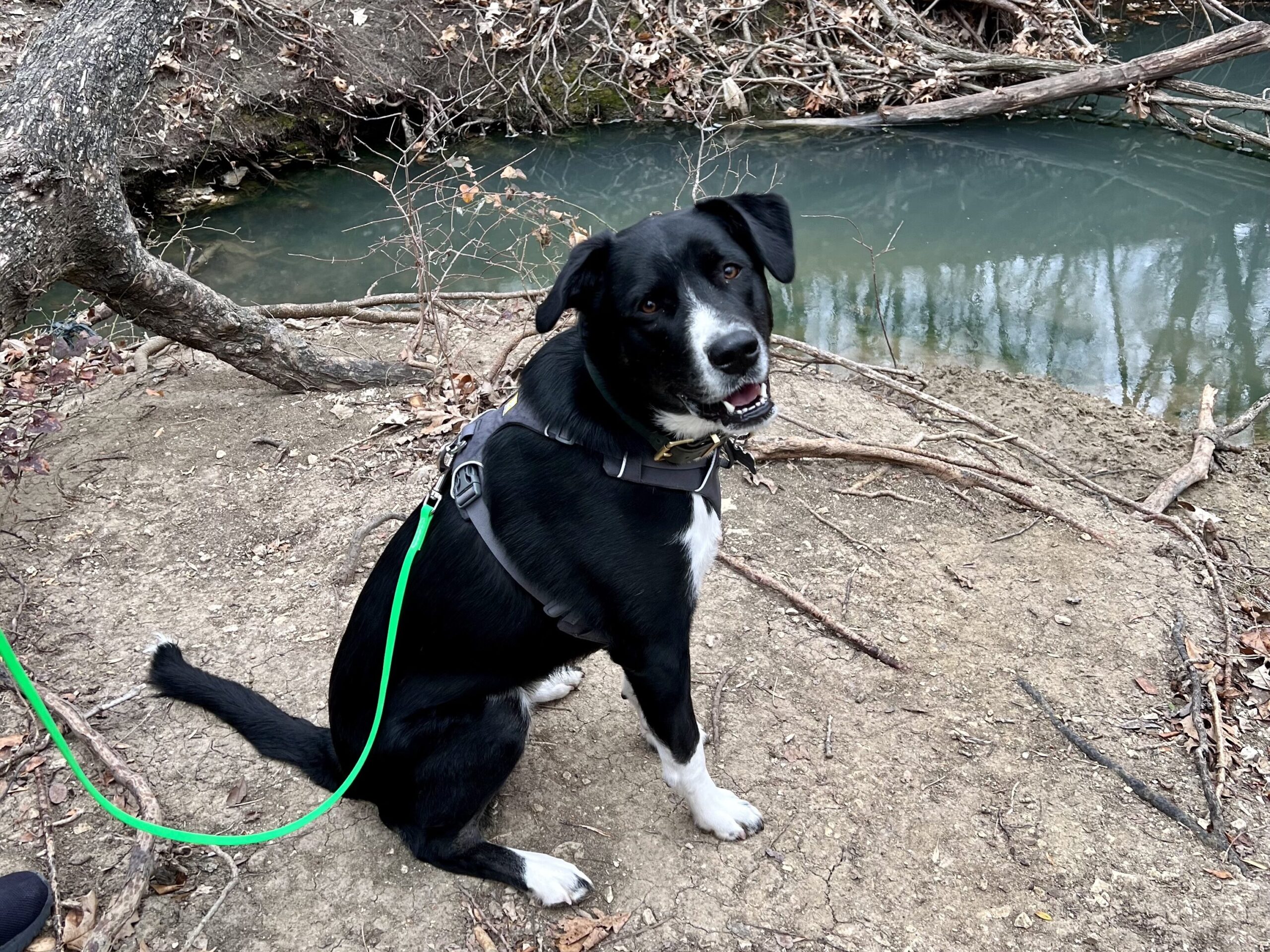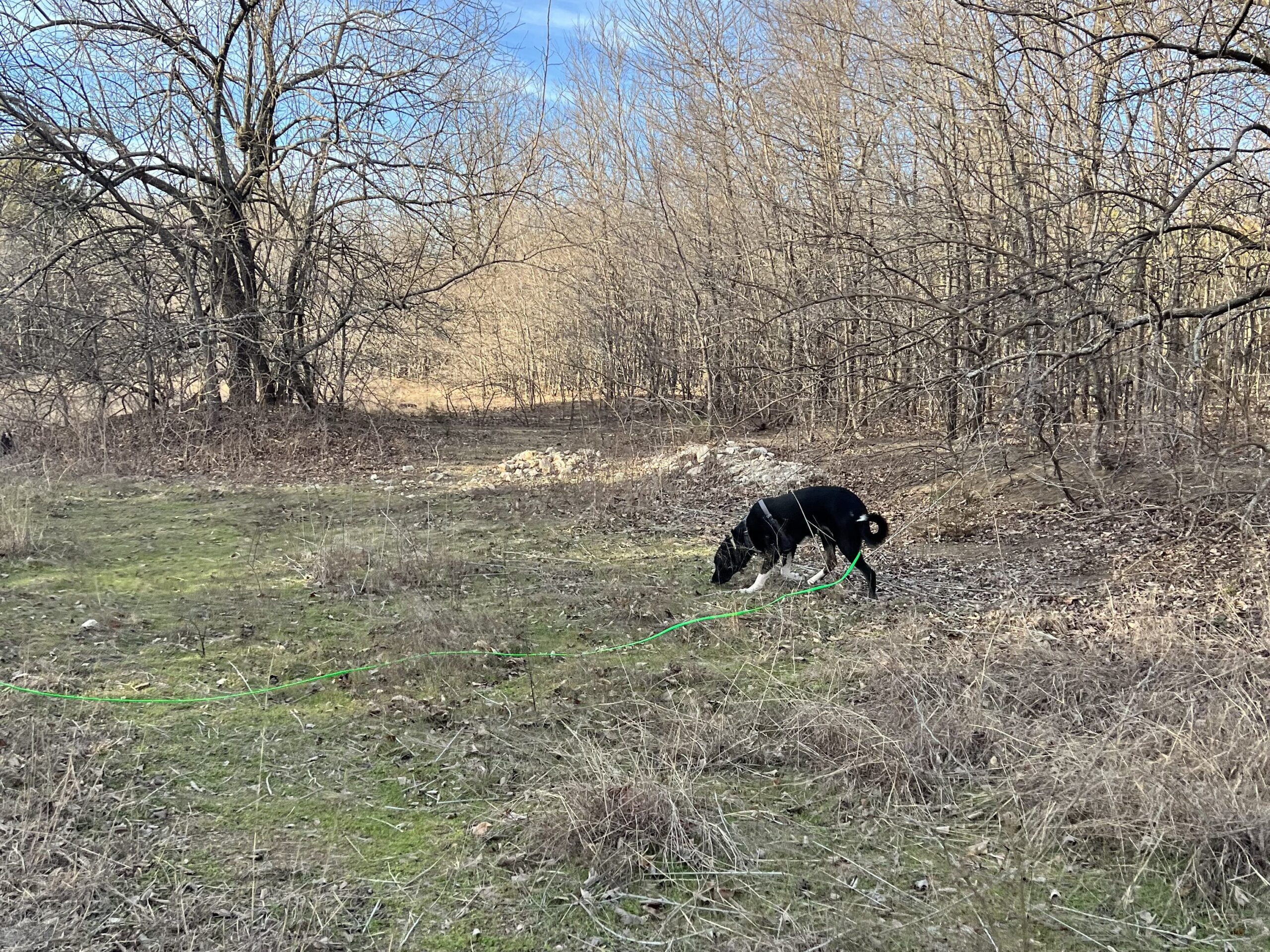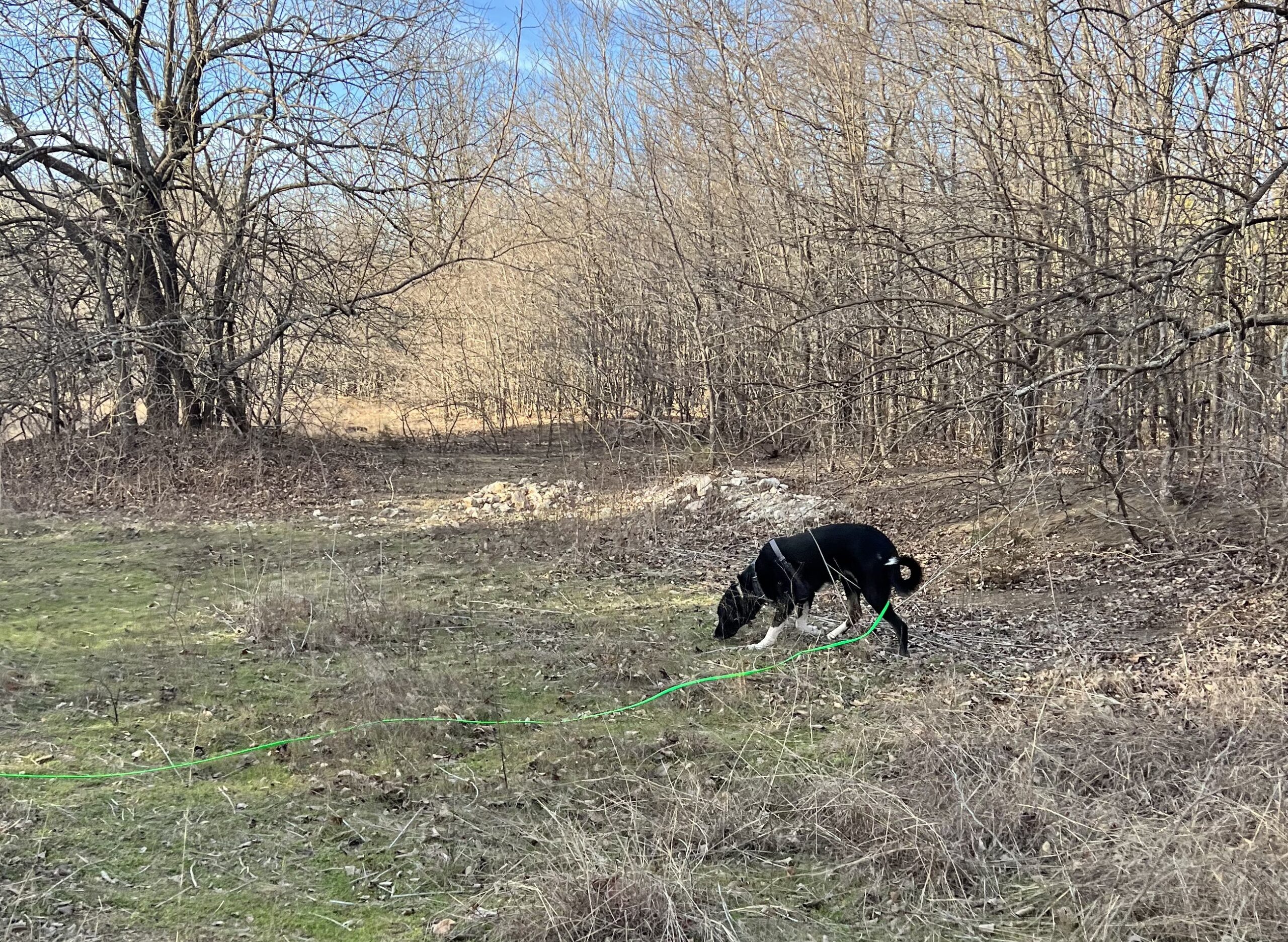Written By: Olivia Connatser CPDT-KA
All featured products are chosen at the discretion of the author. However, as an Amazon associate, I earn from qualifying purchases.
Sniff walks are a fantastic, easy way to provide mental stimulation and physical exercise for dogs. Dogs love to explore and sniff out new scents, and going for a sniff walk allows them to do just that. There are many benefits and reasons why you should take your dog on a sniff walk.

What is a sniff walk?
A sniff walk is a leisurely walk where the dog is allowed to stop and sniff as much as they want. Unlike a regular walk where the dog is expected to stay by the owner’s side and walk at a brisk pace, a sniff walk encourages the dog to set the pace and decide when to stop and smell the roses (or mail boxes).
Why are sniff walks important?
Sniff walks provide a multitude of benefits for dogs. Firstly, they provide loads of mental stimulation. Dogs have an incredible sense of smell (1,000-10,000 times better than humans), and sniffing new scents is mentally enriching for them. Secondly, sniff walks provide physical exercise. While the dog may not be walking at a brisk pace, they are still moving and exploring their surroundings. Lastly, sniff walks can help to reduce stress and anxiety in dogs. Going for a sniff walk allows them to explore and burn off excess energy, and for most dogs, this kind of walk will be more fulfilling and tiring than a walk where they’re being rushed along and not allowed to stop and explore the environment.

How to go on a sniff walk with your dog
Going on a sniff walk is simple, but it requires some patience and a willingness to let the dog lead the way. Here are some tips for going on a sniff walk with your dog:
- Choose a safe location: Choose a location that is safe for your dog to explore. Avoid busy roads, and make sure the area is free of hazards such as broken glass, sharp objects, or poisonous plants. My favorite places to go on sniff walks are parks, open fields, hiking trails and nature preserves.
- Use a harness: It’s a good idea to use a harness rather than a collar when going on a sniff walk. This is because a harness distributes the weight of the dog evenly, which reduces the risk of injury to the neck and spine. A harness with an attachment point on the back also keeps the leash up and out of the dog’s face, and allows for more free body movement. My favorite is a Ruffwear Front Range Harness because it’s extremely durable, easy to clean, has front and back attachment points, and comes in many colors and sizes.
- Use a long leash: If you’re in an area that requires your dog be on leash, or if your dog doesn’t have a solid recall, using a long line gives your dog the most possible freedom to move and explore. Long lines made of biothane are my favorite because they are easy to clean and are very durable. They are also much safer than retractable leashes, which can malfunction and pose safety risks.
- Let the dog lead the way: Allow the dog to lead the way and stop and sniff as much as they want. It’s important to let the dog set the pace and decide when to stop and start.
- Be aware: While your dog is sniffing around, stay present and aware of your surroundings. Keep an eye out for any potential hazards or other dogs that may be approaching.
- Be patient: Going on a sniff walk requires patience. You may need to stop and wait while your dog sniffs around, but this is all part of the experience. Take the time to slow down and spend time in nature with your dog, you may find it relaxing for yourself, too!

In conclusion, sniff walks are an excellent way to provide mental stimulation and physical exercise for dogs. They allow the dog to explore their surroundings and sniff out new scents, which is mentally stimulating and can help to reduce stress and anxiety. If you haven’t already, give sniff walks a try with your furry friend – they will thank you for it!



